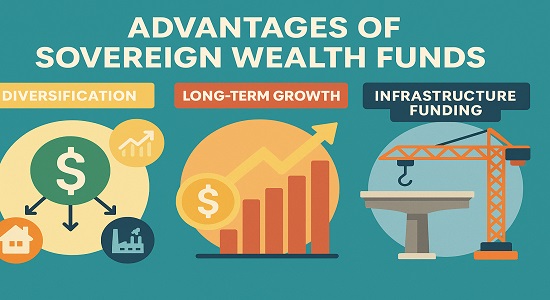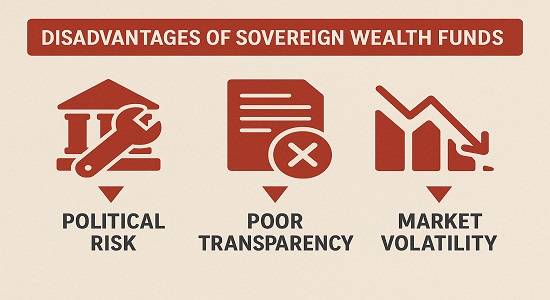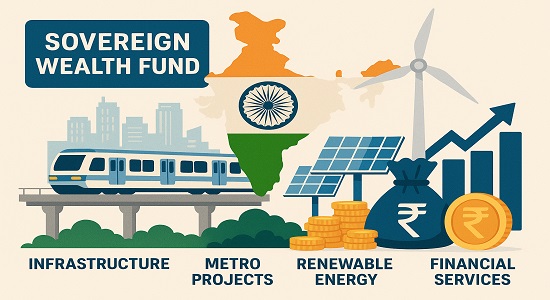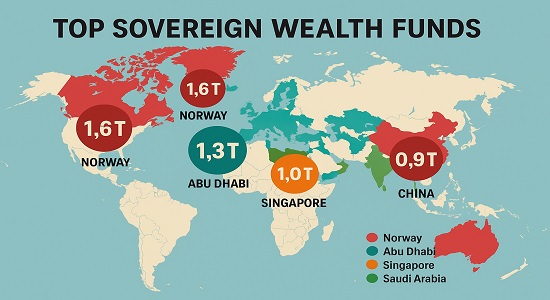Sovereign Wealth Funds: What Retail Investors, Traders & Indian Markets Need to Know
In today’s interconnected markets, Sovereign Wealth Funds (SWFs) are no longer obscure government vehicles — they are powerful global players reshaping infrastructure, real estate, equities, and geopolitics. For retail investors, traders, and Indian market participants, understanding how SWFs operate, where they allocate capital, and the risks involved can offer a significant edge.
In this article, we draw on 25 years of financial market experience to dissect the opportunities and challenges presented by Sovereign Wealth Funds — especially in the Indian context. We also highlight actionable insights, recent trends, and what you should monitor if you want to align your investment strategies accordingly
What are Sovereign Wealth Funds?
A sovereign wealth fund is a state-owned investment fund financed by the government, often using surplus revenues from commodities, trade, or reserves. Unlike central bank reserves, Sovereign Wealth Funds invest for long-term returns and strategic objectives, sometimes across borders, asset classes, and sectors.
The Santiago Principles (2008) set guidelines for transparency, governance, and purpose for many SWFs.
Types of Sovereign Wealth Funds
- Stabilization Funds: to cushion against revenue volatility (e.g. oil price swings)
- Savings / Future Generation Funds: for intergenerational equity (e.g. Norway)
- Strategic / Development Funds: invest in infrastructure, tech, sectors to foster national growth (e.g. ADIA, GIC)
Why Sovereign Wealth Funds Matter for Investors
SWFs are more than passive money buckets. Their decisions influence global capital flows, liquidity, valuations, and even geopolitical alliances
Advantages

- Long-term growth & stability: SWFs can sustain investment through economic cycles, supporting public services and development.
- Diversification across sectors/geographies: they reduce exposure to domestic downturns.
- Support infrastructure and strategic sectors: e.g. roads, power, renewables, AI, semiconductors.
- Wealth generation for public use: returns often fund education, healthcare, pensions.
- Global influence: SWFs can open doors in foreign markets, influencing economic diplomacy.
Risk & Challenges

- Political interference: short-term political goals may override long-term financial prudence.
- Poor governance or opacity: lack of transparency raises corruption or misuse concerns.
- Over-dependence on finite resources: funds tied to oil or commodity revenues face risk as demand or prices change.
- Currency, liquidity, and market risks: international investments expose SWFs to global volatility.
- Potential destabilizing effects: large inflows or outflows by SWFs can affect asset prices and exchange rates globally.
How U.S. Sovereign Fund (Hypothetical) Could Impact Global Markets (and Why It Matters)
Even though the U.S. doesn’t currently have a large federal SWF, a hypothetical one can illustrate risks & opportunities.)

- Market liquidity & volatility: big U.S. SWF inflows/outflows would add liquidity but also potentially sudden swings in sectors like tech, real estate, or energy.
- Asset price influence: with size, U.S. SWF could set benchmarks or pricing norms, affecting global investment trends.
- Geopolitical leverage: investment decisions could align with foreign policy, creating diplomatic tensions or opportunities.
- Trend-setting in strategic sectors: its choices could push global capital into clean energy, defense, semiconductors, etc.
India & Sovereign Wealth Funds: Emerging Opportunities & Risk
Recent SWF investment trends in India

- According to LiveMint, SWFs and pension funds have increased investments in India’s financial services, manufacturing, and infrastructure sectors, reflecting global confidence in Indian reforms. mint
- The Times of India notes that global SWFs are expanding direct investments into India, boosting market depth and infrastructure funding
Why India is attractive
- Large infrastructure needs, favorable regulations, improving ease-of-doing-business, and rising consumption.
- Tax incentives (e.g. Section 10(23FE) for infrastructure investments) can boost SWF interest
Key challenges
- India’s persistent fiscal/current account deficits may limit surplus capital for a domestic SWF.
- Governance, regulatory clarity, and transparency remain concerns (inward & outward) for Indian SWF-related policies.
- Balancing foreign SWF influence vs protecting domestic investor interests.
What Retail Investors & Traders Should Watch

- Monitor large transactions: when SWFs buy/sell in Indian equity, real estate, infrastructure — this often signals macro trends.
- Follow consortiums and co-investments: SWFs often partner with private funds; tracking such moves can reveal high-growth areas.
- Watch policy changes and tax incentives: e.g., regulation around infrastructure, FDI, foreign ownership that affect SWF decisions.
- Assess governance and transparency: use reports from SWF Institute, investment publications, institutional research to evaluate risk.
- Use ETFs, indices, or sector funds that capture SWF-driven sectors (e.g., infrastructure, renewables, finance) to align with the trends.
Perspectives & Insights for Indians
- SWF as stabilizer vs spoiler: In emerging markets, SWFs can offer liquidity and stability, but their sudden exits can exacerbate downturns.
- Co-investment opportunities: Indian retail & institutional investors can benefit from SWF partnerships via infrastructure, REITs, etc.
- Transparency as a competitive advantage: Countries with better SWF disclosure (e.g. Norway, Singapore) tend to be preferred destinations, which may shift investor attention.
Conclusion
Sovereign wealth funds, man, they’re not just some dusty vaults hoarding a country’s extra cash. These things actually throw their weight around—steering where the big money goes, nudging policies, even setting the tone for hot new investment crazes. If you’re messing around in the markets (especially in India), you can’t just ignore what these giants are up to. Seriously, you snooze, you lose.

FAQ on Sovereign Wealth Funds
Q1: Do SWFs affect stock prices directly?
- Yes — when they enter or exit a sector, they can influence valuations, liquidity, and investor sentiment, especially in less liquid markets
Q2: Can individual investors invest in SWFs?
- Not directly, but you can benefit indirectly through index funds, ETFs, real estate, or sector-specific funds that align with SWF activity.
Q3: How do SWFs differ from pension funds?
- SWFs are government-owned and often focus on national strategy, while pension funds are tied to retirement obligations and have different liability structures.
Q4: What are the risks if SWFs sell assets suddenly?
- Rapid outflows can depress asset prices, increase volatility, and destabilize emerging markets. Retail investors may be caught off-guard if unaware.
